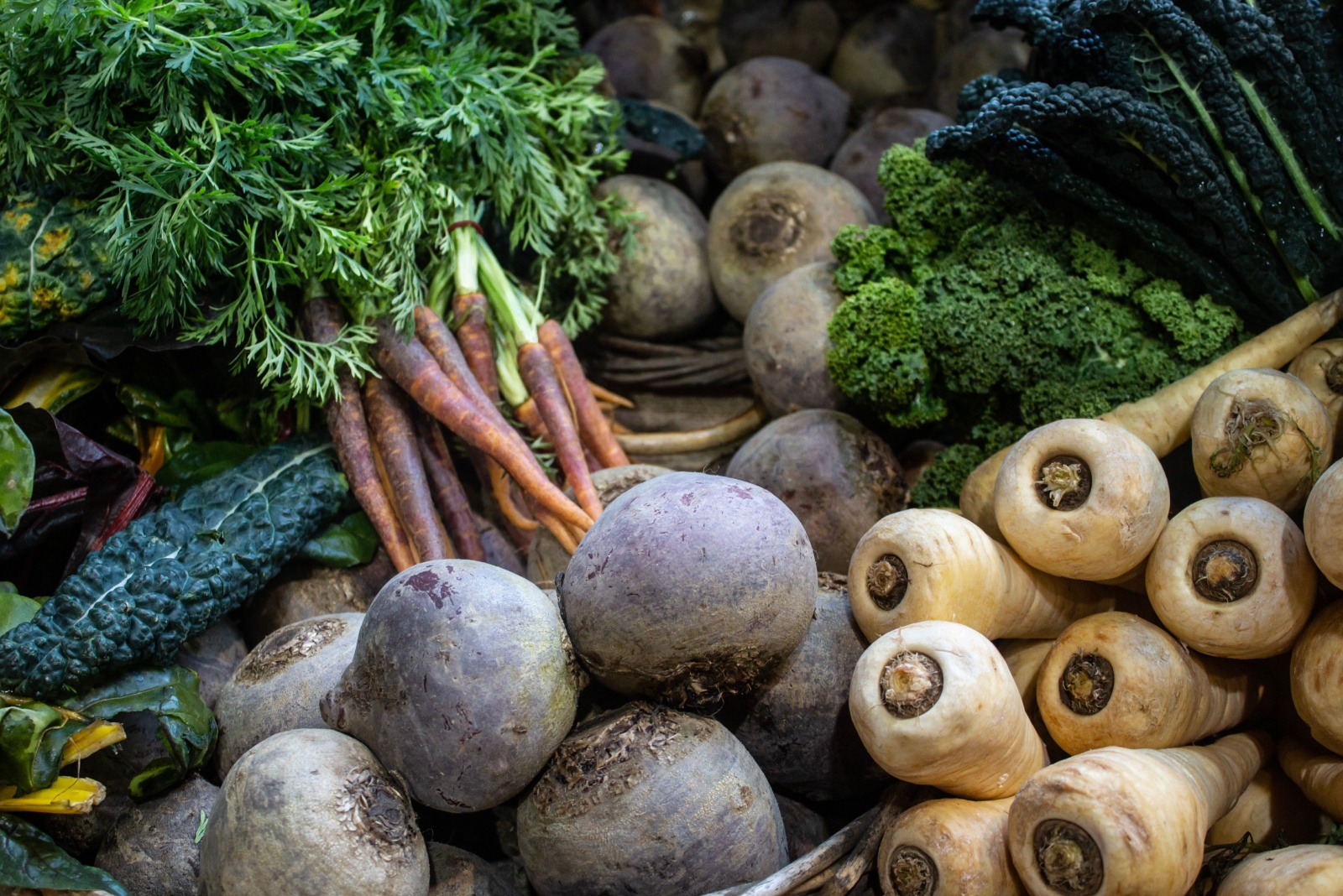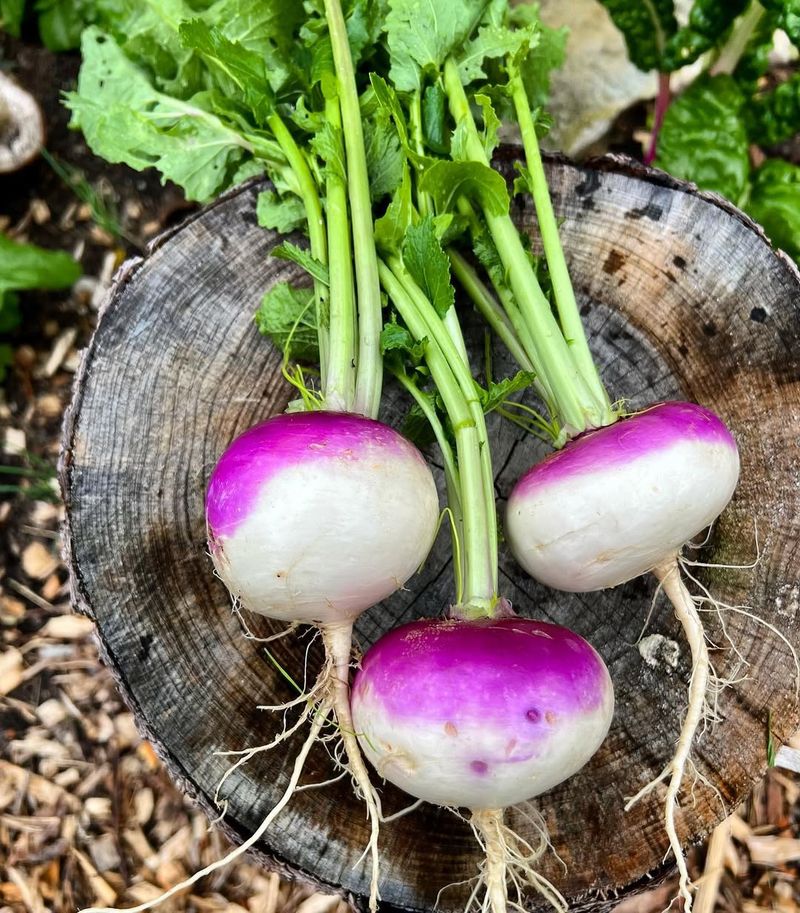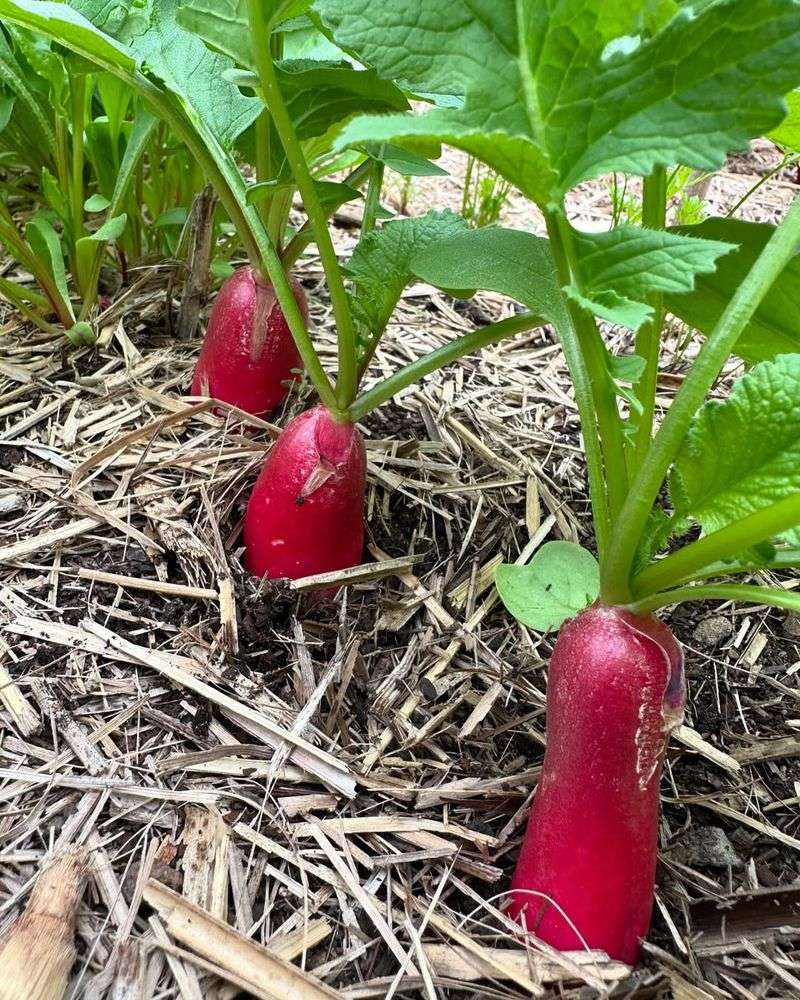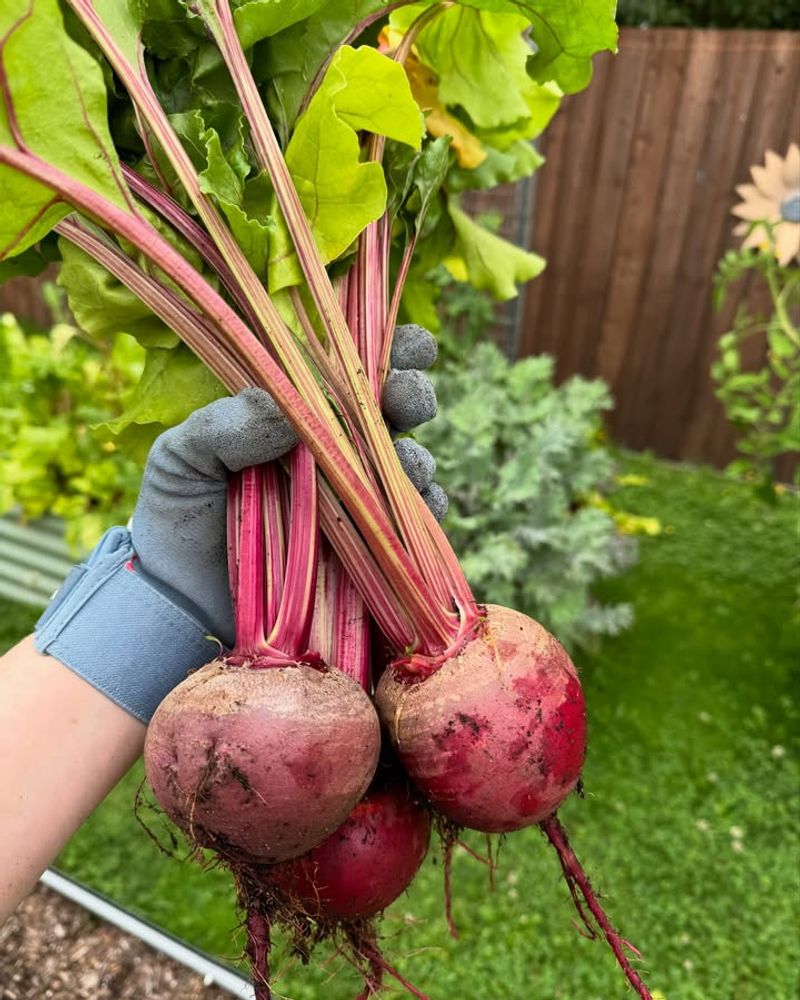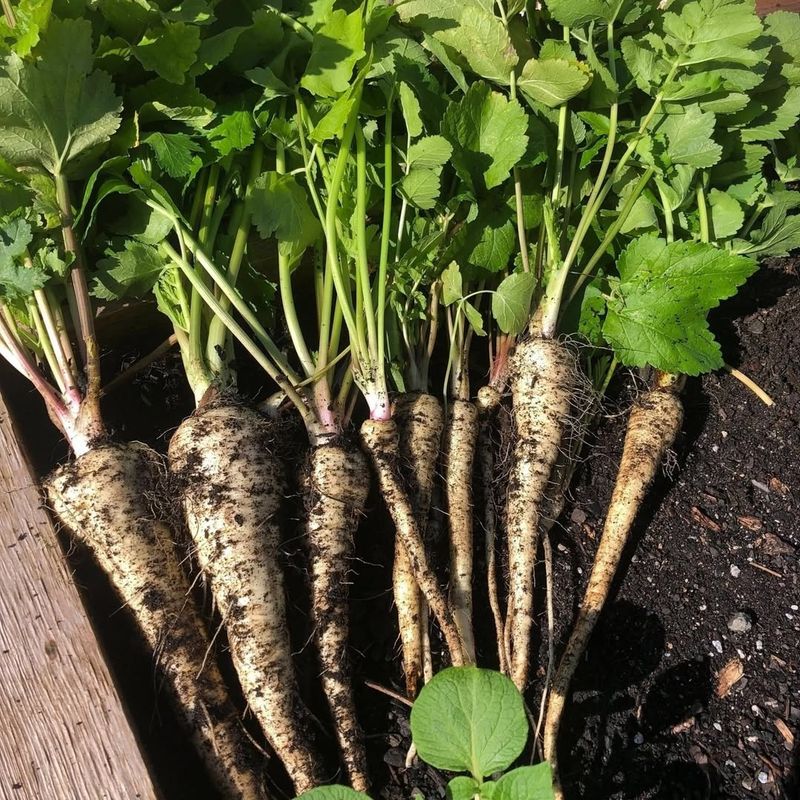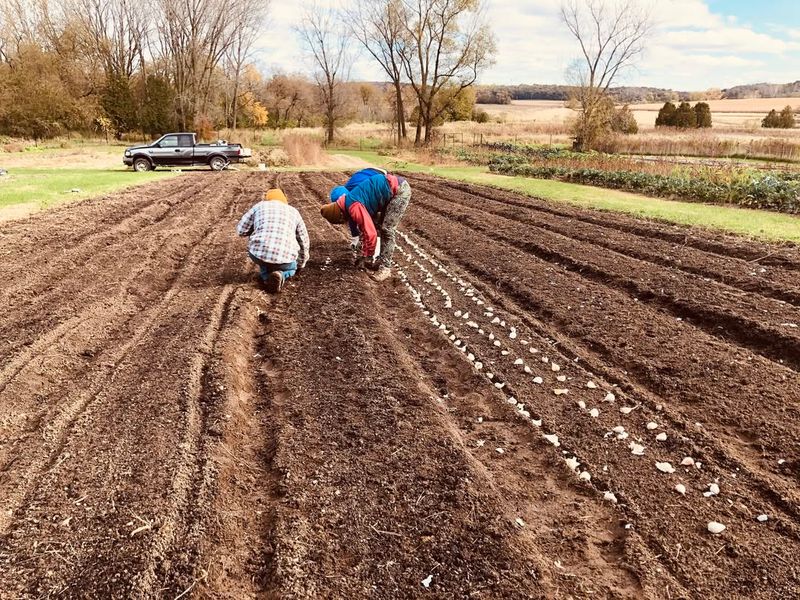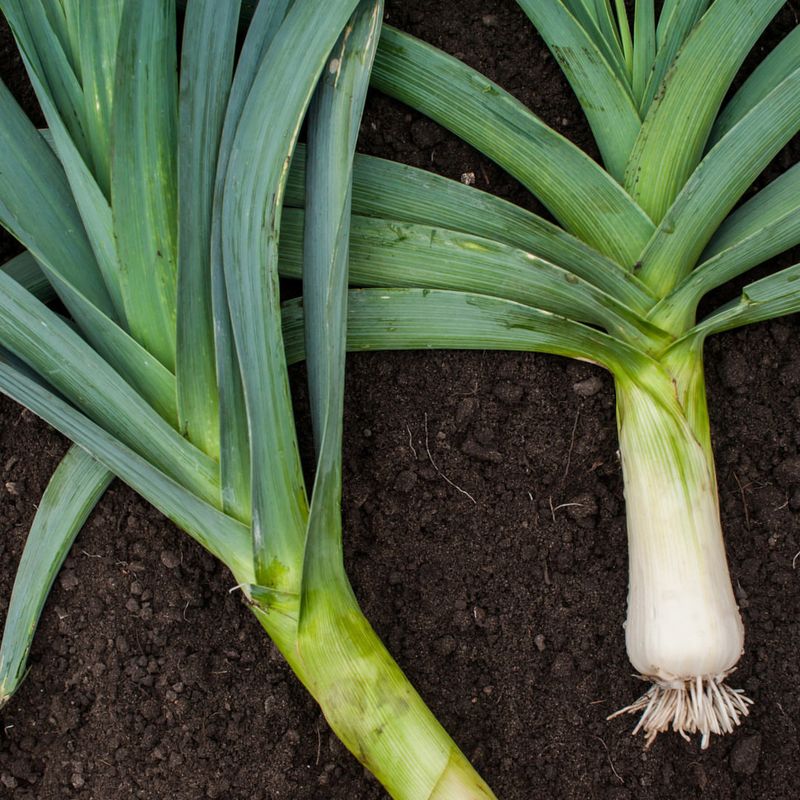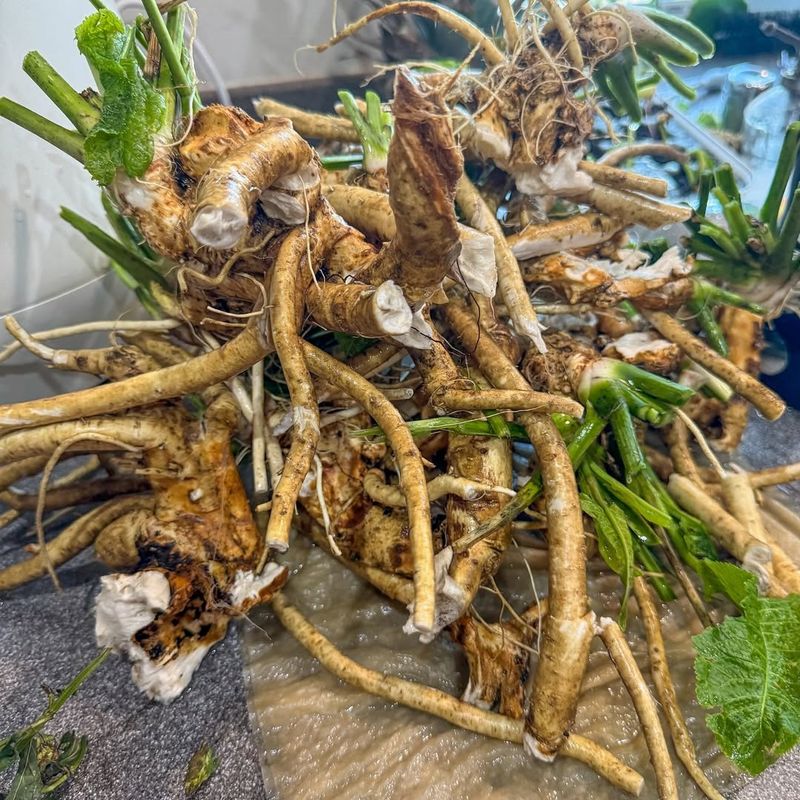December may look like the end of the line for gardening in Kentucky, but root vegetables aren’t ready to throw in the towel. These underground champions thrive when the air turns crisp, pushing their way through cool soil and gaining sweetness with every frost.
Planting them before Christmas gives gardeners a head start on a winter crop that grows steady and strong while the rest of the garden sleeps. With the right roots in the ground, Kentucky gardeners can keep the harvest going long after the calendar says the season should be over.
1. Carrots
Carrots actually taste sweeter when grown in cold weather because they convert starches into sugars to protect themselves from freezing. Plant seeds about 8-10 weeks before your first expected frost date for a Christmas harvest.
Choose shorter varieties like Danvers or Chantenay for Kentucky’s clay-heavy soils. These types grow better in dense earth and develop thick, sturdy roots.
Cover your carrot bed with straw mulch once temperatures drop below freezing. This insulation lets you harvest fresh carrots all winter long, even when snow covers the ground.
2. Turnips
Few vegetables handle Kentucky’s unpredictable winter weather better than turnips. Both the roots and greens are edible, giving you two crops from one planting effort.
Sow seeds directly into the garden in late September or early October. Turnips mature quickly, often ready to eat in just 40-60 days depending on the variety you select.
Purple Top White Globe remains the favorite among Kentucky gardeners for its reliable growth and mild flavor. Harvest them when they reach 2-3 inches across for the best taste and texture.
3. Radishes
Speed demons of the root vegetable world, radishes can go from seed to table in less than a month. Plant them in succession every two weeks through October for continuous harvests into winter.
Winter radishes like Daikon or Black Spanish grow larger and store longer than spring varieties. They develop a milder, less peppery flavor when grown in cool weather.
Mulch heavily around radish plants once cold weather arrives. The protective layer keeps soil temperatures stable and prevents the ground from freezing solid, making harvest much easier.
4. Beets
Beets bring gorgeous color to winter meals while tolerating temperatures down to 30°F without protection. Detroit Dark Red and Lutz Green Leaf varieties perform exceptionally well in Kentucky’s climate.
Plant seeds in early fall, spacing them about 3 inches apart in rows. Beet seeds are actually seed clusters, so expect multiple seedlings to sprout from each one you plant.
Thin seedlings when they reach 2 inches tall, using the tender baby greens in salads. The remaining plants will develop into full-sized roots perfect for roasting or pickling throughout winter months.
5. Parsnips
Often overlooked but absolutely delicious, parsnips need cold weather to develop their signature sweet, nutty flavor. They’re one of the most frost-tolerant vegetables you can grow in Kentucky.
Start seeds in August or early September since parsnips take 120-180 days to mature fully. Patience pays off with these slow growers that improve dramatically after exposure to freezing temperatures.
Leave parsnips in the ground all winter if you want maximum sweetness. A few hard frosts transform their starchy roots into candy-like vegetables that taste amazing roasted or mashed.
6. Rutabagas
Sometimes called winter turnips or swedes, rutabagas grow larger and sweeter than their turnip cousins. American Purple Top produces reliably in Kentucky gardens and stores exceptionally well through winter.
Plant seeds in mid to late summer for a winter harvest. Rutabagas need about 90 days to reach full size, developing best flavor when they mature during cool autumn weather.
Frost actually improves rutabaga taste by mellowing any bitterness. Harvest them after several freezes but before the ground becomes rock solid, or mulch heavily to extend picking time.
7. Garlic
Plant garlic cloves in October or November for a summer harvest of full bulbs. During winter, roots establish themselves underground while shoots remain dormant, waiting for spring warmth to trigger growth.
Softneck varieties like Inchelium Red adapt well to Kentucky’s climate and braid beautifully for storage. Hardneck types produce delicious scapes in spring as a bonus crop.
Break apart bulbs into individual cloves just before planting, keeping the papery skin intact. Push each clove 2 inches deep with the pointed end facing up, then cover with straw mulch.
8. Onions
Short-day onion varieties planted in fall develop strong root systems through winter, then bulb up quickly when spring arrives. Texas Legend and Red Burgundy work wonderfully in Kentucky gardens.
Plant onion sets or transplants in October or November, spacing them 4-6 inches apart in well-drained soil. They’ll sit quietly through winter, barely growing above ground but establishing roots below.
Mulch lightly to protect plants from extreme temperature swings. Come spring, you’ll have a significant head start on gardeners who wait until March to plant their onions.
9. Leeks
Incredibly cold-hardy and often overlooked, leeks can withstand temperatures well below freezing without damage. King Richard and American Flag varieties thrive in Kentucky’s winter conditions.
Transplant seedlings in late summer or early fall, setting them in 6-inch deep trenches. As they grow, gradually fill in the trench to blanch the stems white and tender.
Leeks actually improve in flavor after frost exposure, becoming milder and sweeter. Harvest them throughout winter by loosening soil with a fork, then pulling gently to avoid breaking the stems.
10. Horseradish
Once established, horseradish becomes a permanent garden resident that produces pungent roots year after year. Plant root cuttings in October or November for harvest the following fall and beyond.
Choose a permanent location carefully because horseradish spreads aggressively and proves difficult to eliminate completely. Some gardeners grow it in buried containers to control its enthusiastic growth.
Winter cold triggers dormancy, allowing roots to develop maximum heat and flavor. Dig roots after several hard frosts when you want that signature nose-clearing kick for homemade condiments.
11. Jerusalem Artichokes
Not actually artichokes but rather sunflower relatives, these knobby tubers produce abundantly with almost no care required. Plant tubers in fall for establishment, then harvest from late autumn through winter.
Jerusalem artichokes grow tall stalks topped with cheerful yellow flowers in summer before withering in fall. The real treasure lies underground where numerous tubers develop throughout the growing season.
Leave tubers in the ground until you need them since they store better in soil than in your refrigerator. Dig what you need for meals, and the rest will sprout again come spring.

